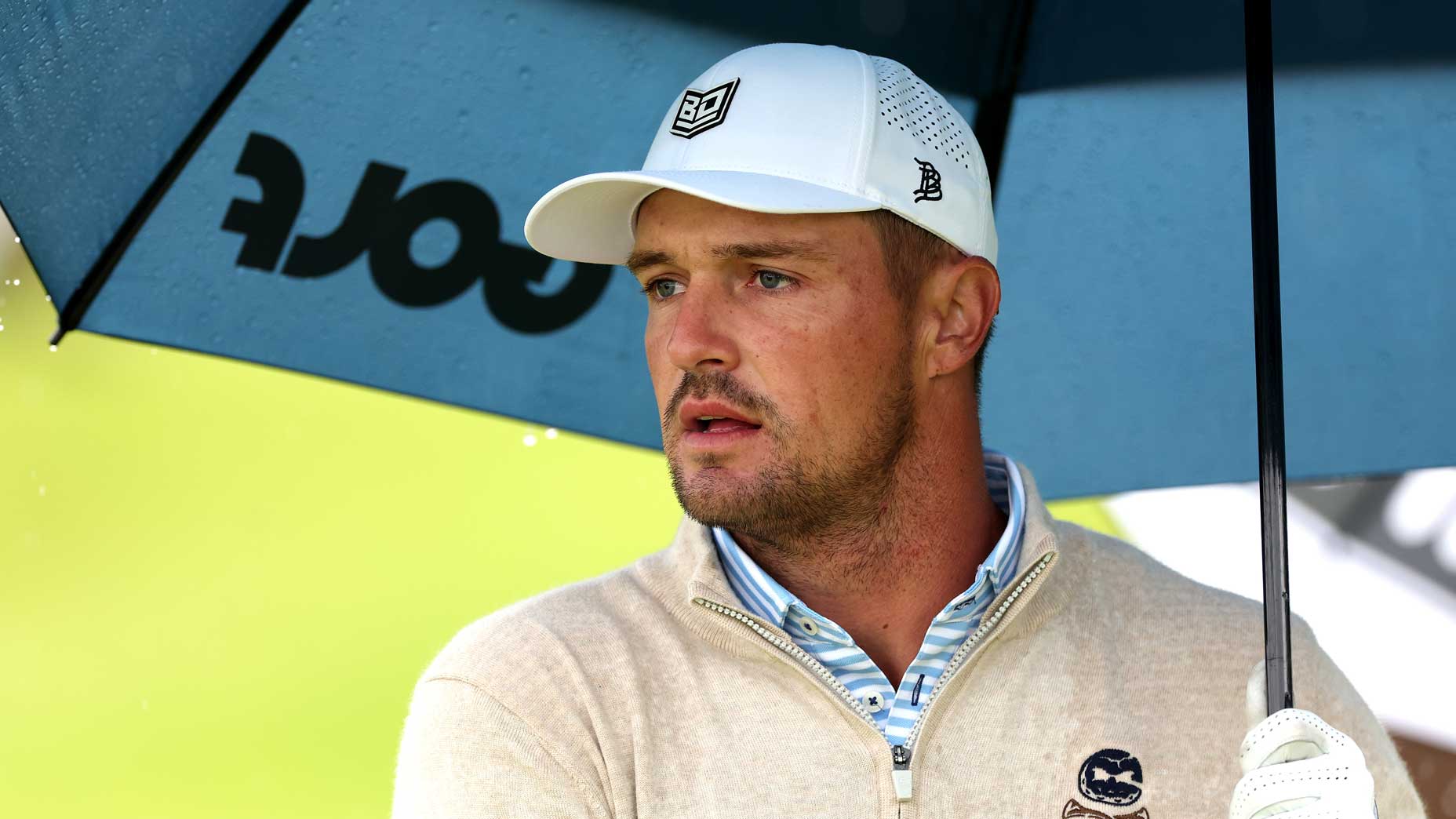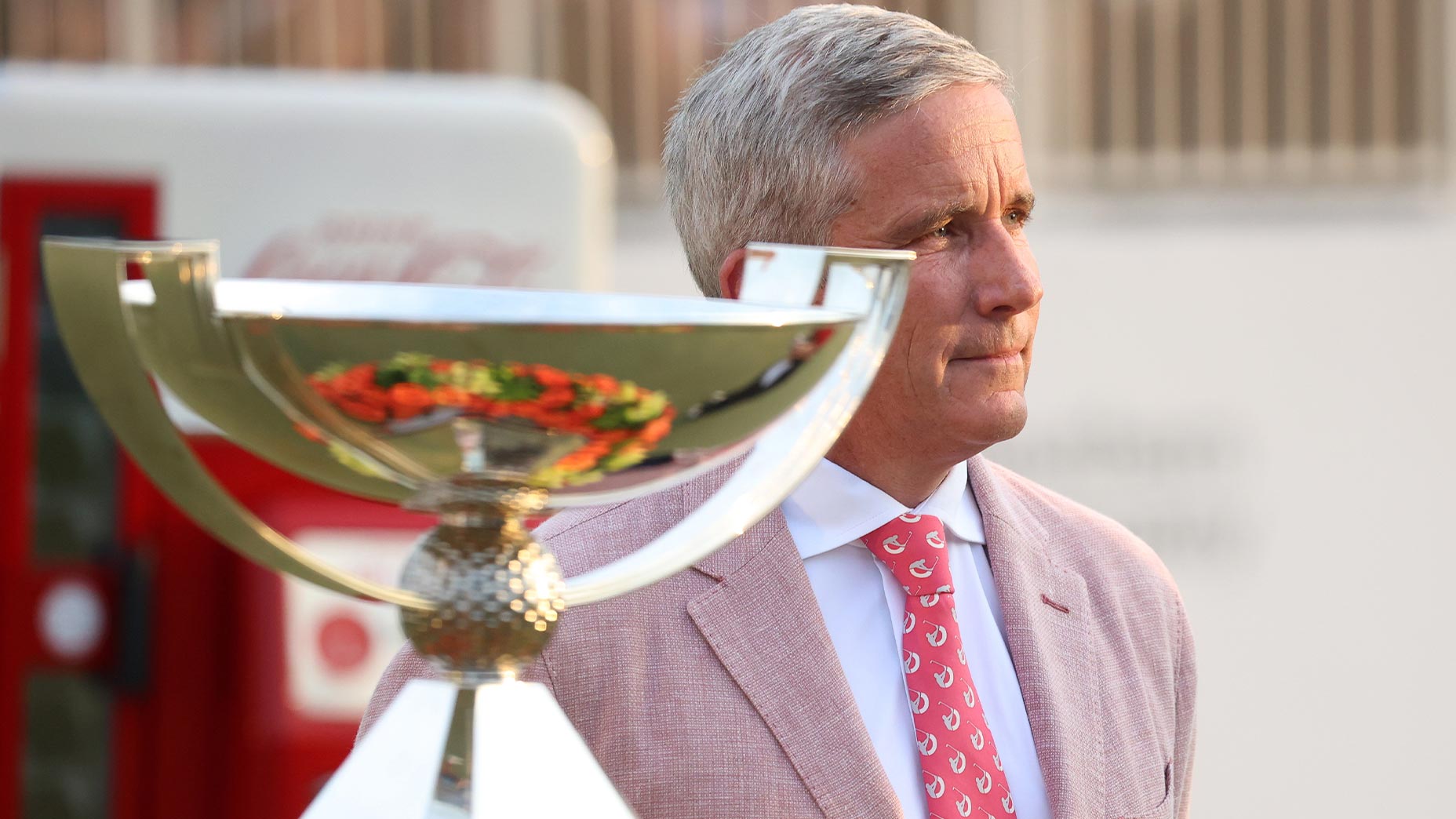LIV Golf officially denied World Ranking points. Here’s what that means

Bryson DeChambeau is one of the 30 best golfers in the world right now, but his Official World Golf Ranking doesn't reflect that.
Getty Images
A full 16 months after its inception, LIV Golf has officially been denied World Ranking points for its tournaments, which was first reported by the Associated Press.
The upstart golf league that launched in June 2022 and immediately rivaled the PGA Tour will not be awarded points by the 43-year-old ranking system, mostly because of what makes it different. LIV’s contests are 54-holes in length, whereas most professional tournaments at the top level of the game are 72 holes. LIV events do not incorporate a 36-hole cut, another sticking point over the last year of deliberation, and have just 48-player fields. But the overarching structure of a league that guaranteed spots for certain players — including stars who signed multi-year contracts with LIV — was too much for the OWGR board to vote in LIV’s favor. The OWGR publicized a letter Tuesday that it addressed to Greg Norman and Gary Davidson — the defacto directors of the league — in which it clarified its unanimous decision.
Peter Dawson, the chairman of the board, told the AP that the OWGR is not “at war” with LIV, nor is its decision rooted in golf politics. “It is entirely technical,” Dawson said. “LIV players are self-evidently good enough to be ranked. They’re just not playing in a format where they can be ranked equitably with the other 24 tours and thousands of players trying to compete on them.”
The biggest issue is that LIV does not have enough guaranteed promotion and relegation of players. Between the 30 Korn Ferry Tour graduates, the PGA Tour University program and 10 Tour cards handed out to the best players on the DP World Tour, more than 40 non-Tour members earn their way into the predominant circuit each year. As for LIV, only three players earn their way in via an end-of-year promotion tournament, and one other spot is issued through the Asian tour, which is owned by LIV Golf Investments.
“Simply put,” the letter reads, “the Board Committee does not believe it is equitable to thousands of players who strive every day to get starts in OWGR Eligible Tournaments to have a tour operate in this mostly-close fashion where it is not possible to fairly assess what it means to win a LIV event relative to other tournaments around the world.”
So, what does it all mean for LIV Golf?
For starters, expect some commentary from LIV players. The series is playing its final individual tournament this week, in Saudi Arabia, from which Cam Smith, Talor Gooch, Bryson DeChambeau, Brooks Koepka, Chase Koepka and Matthew Wolff will speak at press conferences. The OWGR wrinkle in LIV’s ecosystem has been a topic of angst for many of its players whose ranking has plummeted over the last year. Just last week, Louis Oosthuizen spoke with UK golf site Bunkered, saying, “It’s not a World Ranking system. You can say it’s more PGA Tour ranking than anything.”
Some LIV golfers have played well enough in the major championships (which award more points than any other tournaments), but others haven’t fared well. According to DataGolf, an independent golf analytics website, Dustin Johnson ranks as the 39th-best player in the world, while the OWGR ranks him 121st. That fact clearly doesn’t sit well with Dawson, but he speaks as though something needs to be done by LIV moving forward.
“Dustin Johnson, Sergio Garcia, of course they should be in the ranking,” Dawson told the AP. “We need to find a way to get that done. I hope that LIV can find a solution — not so much their format; that can be dealt with through a mathematical formula — but the qualification and relegation.”
How long this decision will matter depends mostly on the staying power of LIV Golf itself. As long as it exists in its current format, some of the best golfers in the world will struggle to remain in the top 100. Proponents of the league contend that LIV is here to stay, pointing out it has the financial backing of Yasir Al-Rumayyan, the governor of the Saudi Public Investment Fund. Al-Rumayyan’s dreams for LIV Golf could just be starting. He is keen for team golf, and is expected to take a seat on the PGA Tour Policy Board when (and if) a merger of operations is agreed upon.
But what if the merger doesn’t go through? Or, in the event it does, would anything about the qualification for LIV events change enough for the OWGR to alter its decision? Does the merger imply an even worse chance for promotion into LIV’s $25 million events?
The significant question in the meantime surrounds how many LIV golfers will continue to play major championships, which often invite players ranked in the top 50 or 60. Brooks Koepka will be in attendance. Cam Smith as well. But players who used to rely on their World Ranking to earn invites — the Kevin Nas, Harold Varners and Talor Gooches of the world — will have to qualify through other means. For the Masters and PGA Championship, that seems difficult. For the U.S. and British Opens, there is a qualifying series of tournaments they are free to join. This season’s majors saw anywhere from 15 to 18 LIV players compete, but next year’s Masters already looks like that number might dip to single-digits.
Of course, the OWGR-LIV relationship has been a two-way street for months, and it’s possible that changes could be made. The league is free to make adjustments to its qualification system. And it has clearly shown an ability to make decisions on the fly. But with a plan for 2024 already in place, it would likely take another year to implement. Nothing about the World Ranking moves quickly.










